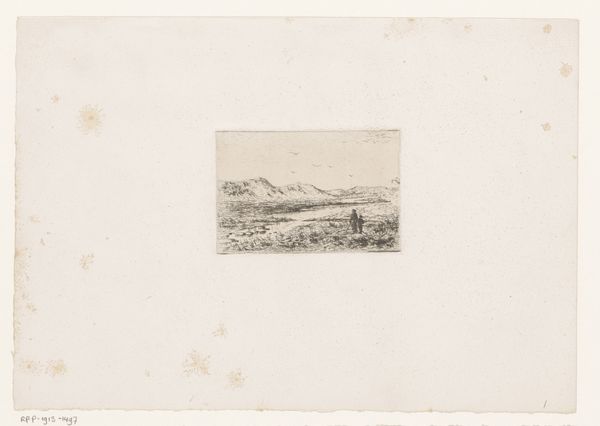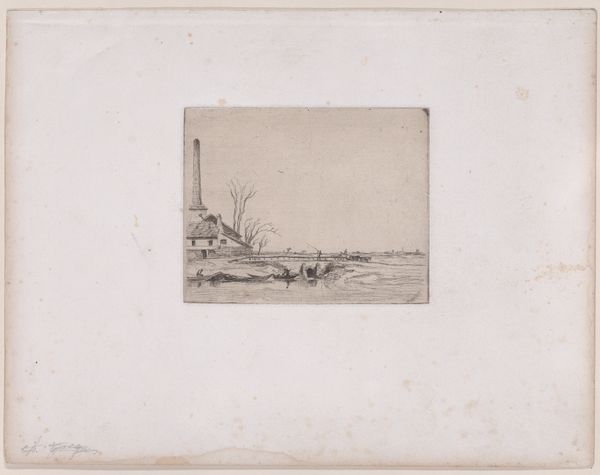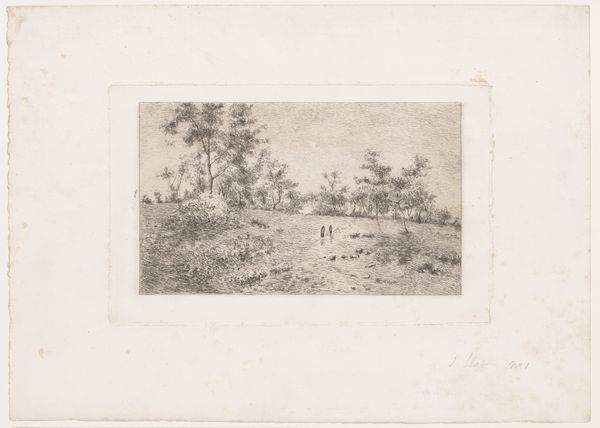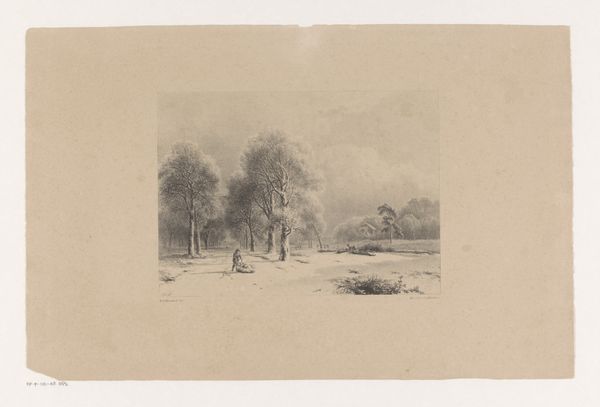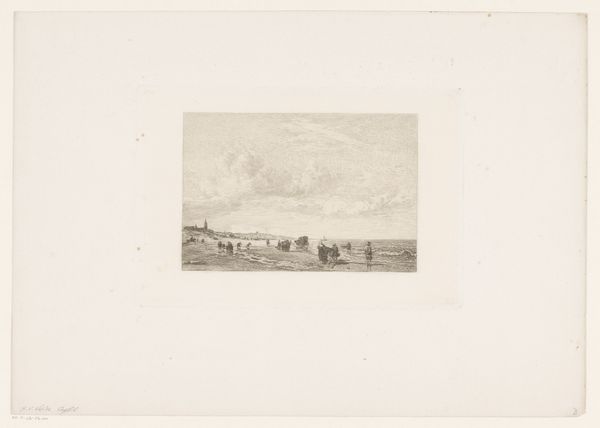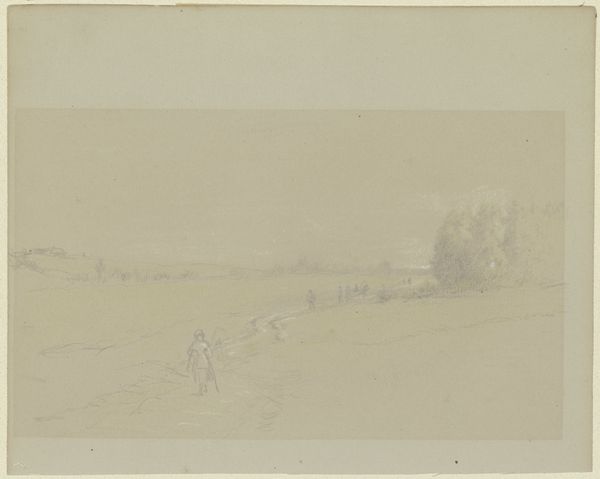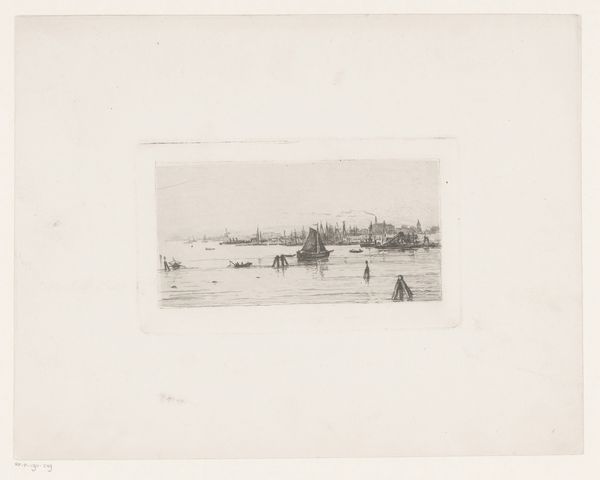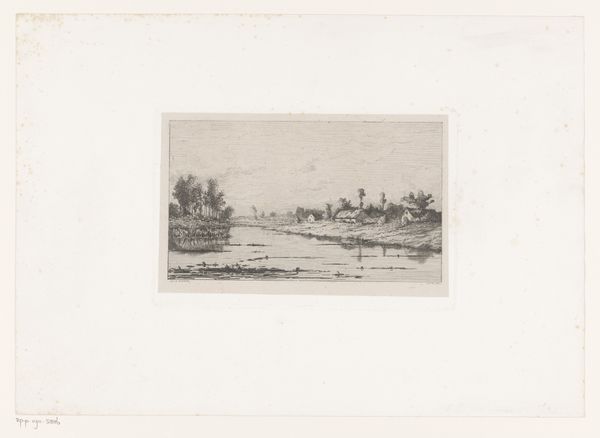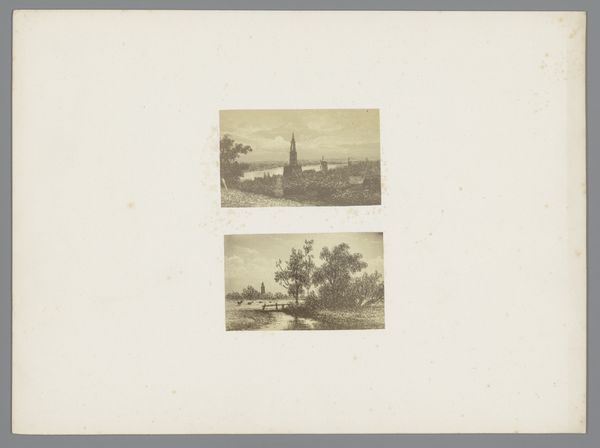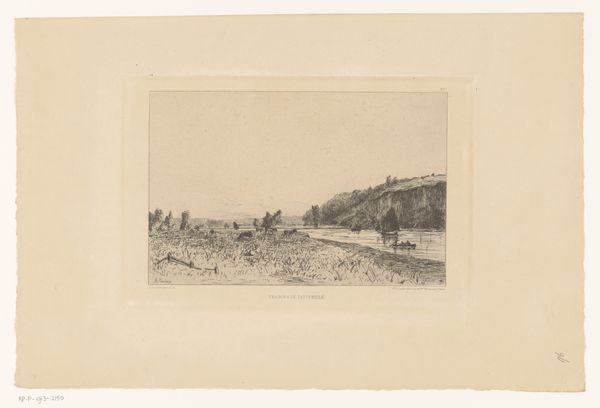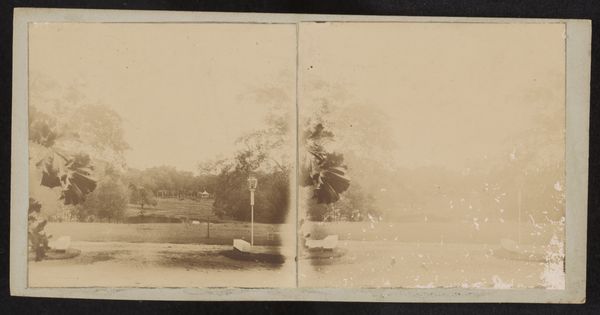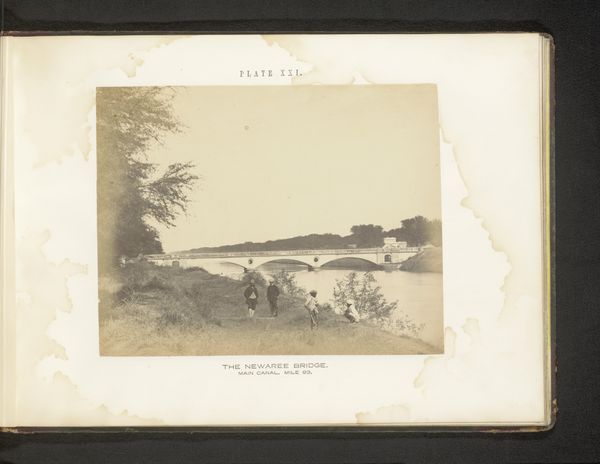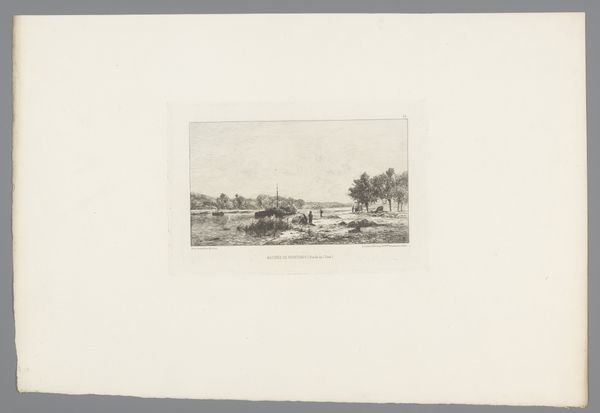
photography
#
aged paper
#
homemade paper
#
paper non-digital material
#
pale palette
#
paperlike
#
flat design on paper
#
light coloured
#
landscape
#
paper texture
#
photography
#
folded paper
#
paper medium
#
realism
Dimensions: height 103 mm, width 160 mm, height 210 mm, width 258 mm
Copyright: Rijks Museum: Open Domain
Curator: Let’s examine this photographic print, titled "Overstroming in Nieuwkuijk, Noord-Brabant," which translates to "Flooding in Nieuwkuijk, North Brabant." It’s attributed to Albert Greiner, and dates back to around 1880-1881. It now resides in the Rijksmuseum collection. Editor: It has an almost ghostly feel to it. The light palette and aged paper contribute to this somber mood. The texture of the paper really jumps out at me, it feels old and delicate. Curator: The choice of paper is fascinating, isn’t it? It looks like homemade paper; the materiality suggests something beyond a straightforward documentation of the event. Think about the labor involved in making paper like this and its inherent value in that period. Photography offered a new way of representation, yet it still carried associations with craft. Editor: Yes, absolutely. And looking at it from a historical point of view, the photo shows us not just the physical reality of the flooding, but it also raises questions about its impact on the community. We have several figures standing along the bank; were they involved with aid efforts or simply bystanders assessing damages? Were such scenes commonly photographed at that time? What would seeing this mean to the people depicted in this photograph? Curator: Exactly. Consider, too, the social context: this photograph likely wasn’t mass-produced in the way we understand photography today. Who was the intended audience? Was it meant to inform, to move people to action, or perhaps serve some other purpose related to the local structures of power at the time? What specific role did photography have within these disaster narratives, how it’s sold, viewed, and utilized within a specific context. Editor: It’s tempting to interpret it as a simple record, but it becomes so much more meaningful when we delve into the broader societal circumstances around both the event and how it was then depicted through visual media. It challenges us to consider not just what is seen, but *why* and *for whom* it was seen this way. Curator: It's been quite insightful to connect material properties to larger questions around labor and social purpose. Editor: Indeed. Thinking through those layers really enriched my appreciation. It’s more than just a photo; it's a visual echo of history and the materiality used, giving texture to social memory.
Comments
No comments
Be the first to comment and join the conversation on the ultimate creative platform.
